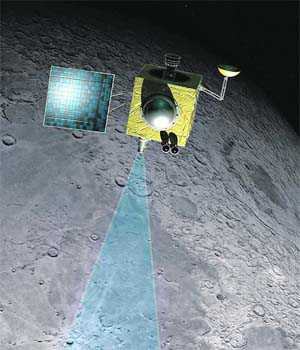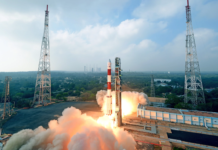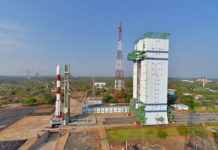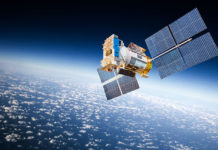A spacecraft of 1.5m on each side, almost one-fourth of a small bedroom was launched by Indian Space Research Organization (ISRO) with the name Chandrayaan-1 on 22nd October 2008. After one year on August 2009, ISRO lost communication with the spacecraft, Chandrayaan-1. It was very critical to locate and identify any lost spacecraft in a several million miles distances, but using the new technological application of Ground Based Radar, the NASA scientists at JPL successfully located the spacecraft. They have located the spacecraft on Thursday, 9th March 2017, still orbiting 200 kilometers above the lunar surface.
Although the ground-based interplanetary radar has been used to observe the small asteroids located several million miles away from the Earth, researchers were not confirmed that a spacecraft of such smaller size as far away as the moon could be detected, even with the world’s most powerful radars. However, the Radar team utilized the fundamentals that the spacecraft, Chandrayaan-1, is in polar orbit around the Moon, so it will always cross above the lunar poles on each orbit. On 2nd July 2016, the team pointed their radar at a location about 160 kilometers above the North Pole of the Moon and waited to see if the lost spacecraft crossed the radar beam, and fortunately, it got captured in the radar beam. In addition to finding Chandrayaan-1, the scientists also located NASA’s Lunar Reconnaissance Orbiter around the Moon.
The scientist Marina Brozovic was the key person behind the ground-based radar monitoring technique, who is working as a radar scientist and a principal investigator at Jet Propulsion Laboratory (JPL). She said, “We have been able to detect NASA’s Lunar Reconnaissance Orbiter (LRO) and the Indian Space Research Organization’s Chandrayaan-1 spacecraft in lunar orbit using the ground-based interplanetary radar”.
Detecting the location of LRO was little bit easy because they were continuous working with the spacecraft’s navigators of LRO and had precise data where it was located, hence it was comparatively easy to find LRO, but finding India’s Chandrayaan-1 was very difficult and required a more detective work because the last communications with the spacecraft was 8 years ago in August of 2009.
Finding a perilous spacecraft at a million miles distance that has not been tracked for 8 years is very tricky because the Moon is riddled with the mascot that can dramatically affect a spacecraft’s orbit over time, and even cause it to have crashed into the Moon. The orbital calculations indicated that the craft, Chandrayaan-1 is still orbiting 200 kilometers above the lunar surface, but it was generally considered “lost.”
Experts suggest that the Chandrayaan-1 is now creating space junk; it cannot receive or send data to earth. It costs almost $74 million in 2014 to send this spacecraft to lunar orbit, which almost one –tenth of NASA’s moon mission and far cheaper than the budget of a Hollywood’s blockbuster movie. Now India is planning for a second mission to send its second spacecraft to the moon, Chandrayaan-2, early next year.




